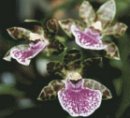 |
| BOT 3015 Sample Exam 2 | |||
| For no. 1--16, match the following by placing the letter representing the best possible answer in the space to the left. __1. oldest living plant __2. tallest living plant __3. most massive living plant __4. largest sperm in “plant kingdom” __5. tree with flat, fan-shaped leaves __6. source of cancer-fighting medicine __7. “palm-like” tree with compound leaves __8. desert shrub with scale-like leaves __9. a “conifer” that doesn’t produce its seeds in a cone __10. a “living fossil” from China revered by Buddhists __11. closest relative to the weird African plant, Welwitschia __12. most widespread gymnosperm in Florida __13. some local folklore says wood of this tree was used in Noah’s ark __14. pollen has wing-like projections for wind dispersal __15. has both male and female parts on the same plant __16. has male and female parts on separate plants KEY A. Cycas, cycad B. Ephedra C. Ginkgo D. Pinus, pine E. Sequoia, redwood F. Sequoiadendron, California big tree G. Taxus, yew H. Torreya - - - - - - - __17. The remains of the archegonium of a moss that covers the capsule is called: (A) gemma, (B) protonema, (C) calyptra, (D) elater, (E) annulus, (F) indusium, (G) sorus. __18. What does Selaginella have that Pinus does not: (A) strobilus, (B) heterospory, (C) homospory, (D) antheridium, (E) archegonium, (F) oogonium. __19. What does Selaginella have that Lycopodium does not: (A) strobilus, (B) heterospory, (C) homospory, (D) antheridium, (E) archegonium, (F) oogonium. __20. Which of the following represents an early stage of a moss sporophyte: (A) annulus, (B) sorus, (C) antheridium, (D) archegonium, (E) protonema, (F) spore. __21. A synonym for megasporangium is: (A) annulus, (B) nucellus, (C) sorus, (D) prothallus, (E) integument, (F) gemma, (G) soredium. - - - - - - - - For nos. 22-30, match the following by placing the letter representing the best possible answer in the space to the left. __22. the genus Equisetum belongs here __23. the genus Selaginella belongs here __24. the genus Marchantia belongs here __25. has jointed stems with a “cone” at the tip __26. can have tracheids in its gametophyte __27. has no tracheids __28. tree ferns and water ferns belong here __29. to which group would the terms “sorus” and “indusium” best apply __30. a leafless, vascular plant with dichotomous branches would most likely belong here KEY A. Bryophyta B. Lycophyta C. Psilophyta D. Pterophyta E. Sphenophyta - - - - - - - - __31. In seed plants, the tissue that eventually becomes the seed coat is termed: (A) gemmae, (B) integument, (C) nucellus, (D) prothallus, (E) microsporangium, (F) calyptra. __32. Presence of archegonia but no antheridia best represents which major group of plants: (A) algae, (B) ferns, (C) gymnosperms, (D) hornworts, (E) liverworts, (F) mosses. __33. When vegetative gametophyte tissue is considerably reduced, it is referred to as: (A) prokaryotic, (B) procambium, (C) prothallus, (D) protonema, (E) protococcal. ____34 & 35. List, with answers in alphabetical sequence, TWO (2 and only two!) features that most accurately distinguish mosses and vascular plants from algae and fungi: (A) true chlorophyll, (B) vessels and sieve cells, (C) multicellular gametangia, (D) multicellular gametes, (E) multicellular haploid generation, (F) multicellular diploid generation, (G) integuments, (H) embryos, (J) seeds, (K) dikaryotic tissue, (L) prokaryotic cells, (M) protococcal cells. |
|||